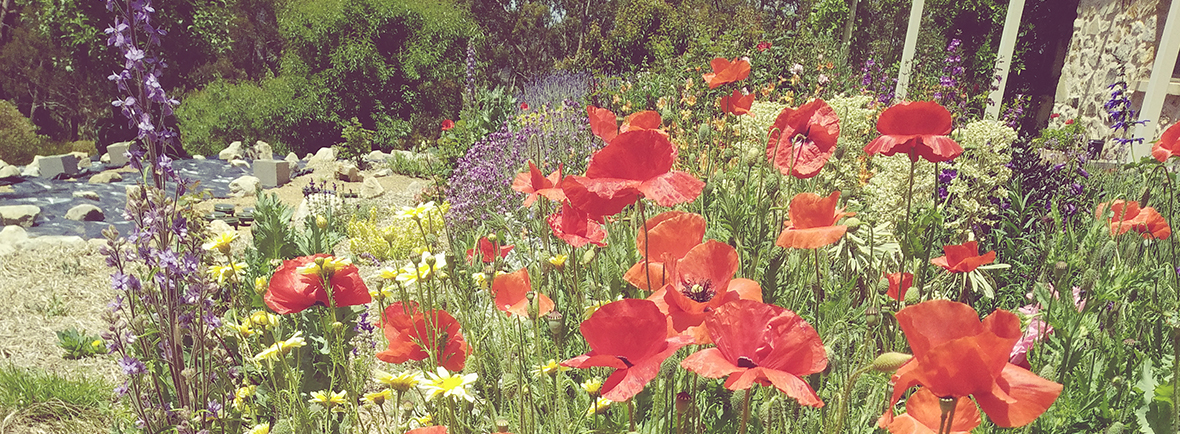Climate proofing your garden
A couple of weeks ago we were finally settling into summer in the garden – checking watering systems and hoses, moving tender potted plants into the shade, planning our activities according to the hottest part of the day, maybe even getting out our swimming togs!
Then in a flash the wild winds blew, temperatures dropped, the lightning flashed, the heavens opened and we were plunged into darkness! Now the temperatures have risen again and we’re waiting for a cool breeze. I’m thinking of renaming Climate Change….Climate confusion!
In our nursery, the spring season was so slow that only now are some plants responding to the warmth and looking their best. The vegie garden is super late, and I have only just put in my tomatoes, zucchini and basil.
So how can we adapt to the changes in our weather patterns and the continuing unpredictability of the climate in our gardens?
Plants seem to be so flexible I am totally amazed. I like to grow mine tough, so they are strong and sturdy, and ready to face harsh weather conditions. Here are my best tips to help them to survive and thrive.

Firstly, plant LOCALLY, OUTSIDE GROWN plants that are adapted to our local conditions, not grown in artificial conditions in another state. I can’t stress this enough – PLEASE BUY LOCAL! There are so many wonderful local nurseries in the Adelaide Hills – growers whose plants are hardy and acclimatized to this strange changeable weather. You can have great success if you source the right plants that have been grown well.
Secondly, choose the RIGHT PLANTS for your climate and location. Native plants that grow in your conditions and plants that come from similar conditions and climates around the world will do best. Be careful with the tag ‘native’ as this can refer to plants that come from all parts of Australia, from the wet tropics of Queensland to the cool mountains of Tasmania. Also take note of what type of soil your native plant might need – many West Australian plants grow best in sand and some grevilleas prefer the acidic soil of the Blue Mountains. Neither of these enjoys the hard alkaline clay found in much of South Australia!

Thirdly MULCH, MULCH and MULCH! I use pea straw or bark chips, but the choice is yours, as long as you cover your soil. Always put mulch down when the soil is moist, which means after a good rain or watering. If you are mulching around shrubs or trees, also consider putting wet newspaper or cardboard under your mulch. This will reduce evaporation, give the worms a cool place to live, and add organic matter to the soil when it breaks down.
Fourthly, WATER YOUR PLANTS in the cool times of the day, either early morning or evening, and give them a long drink. Giving them a deep soak will encourage them to put down deep roots in the earth – it’s what they do naturally! I water my garden only when necessary, checking to see if my plants really need it. I do this by putting my finger into the soil to feel if it’s damp and by observing the plants themselves. Some plants will wilt in the heat – just like us! This isn’t always because they need water, and they will perk up when the sun goes down.

Lastly, FEED YOUR PLANTS in the cooler times, as plants that are healthy and thriving will be better able to survive the change in the weather. Don’t give them fertilizer in the hottest weather, as the plants won’t be able to use it.
Don’t despair with your garden in this changeable weather. Put some of these tips into practice and relax– plants are tougher than you think!
Until next time,
Happy gardening
Amanda


